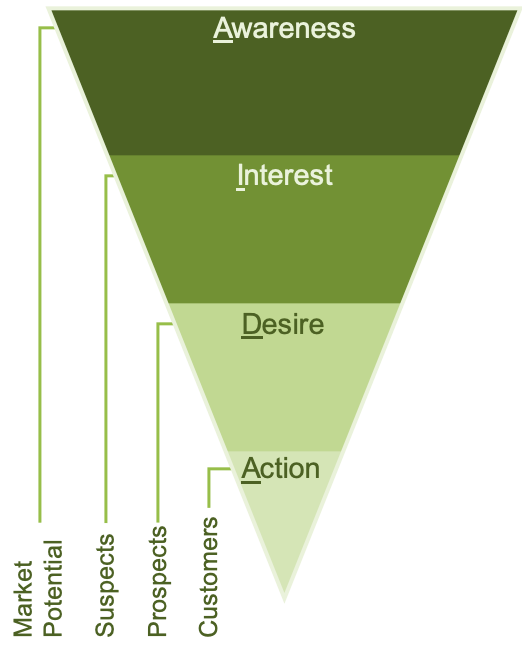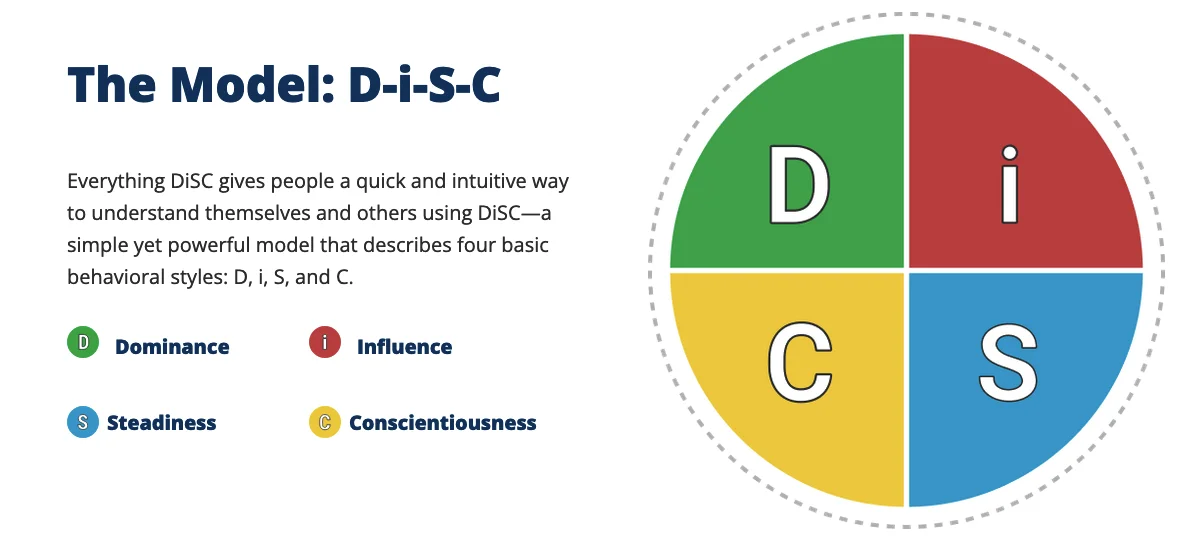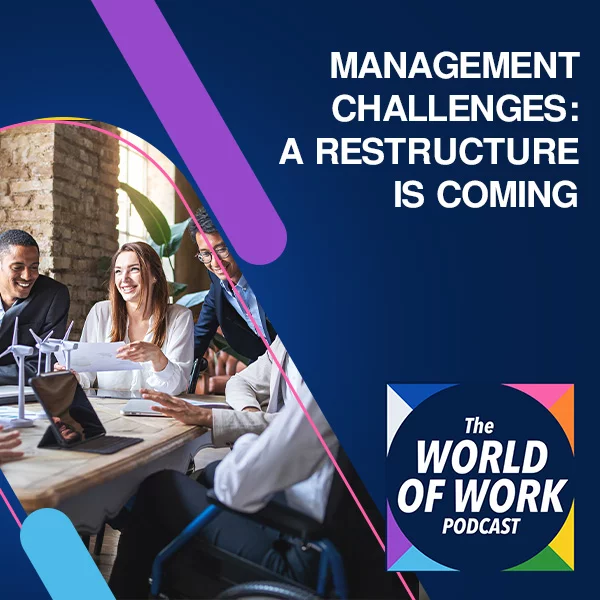The AIDA marketing model has four stages: Awareness, Interest, Desire and Action. Like all hierarchy of effects models, the AIDA model shows how to funnel consumers towards a purchase. It does this by helping them get to know the product, then like the product, then purchase the product.
Summary by The World of Work Project
The AIDA Marketing Model

The AIDA model is a framework for persuasive communication from the world of marketing. Its four stages are: awareness, interest, desire and action.
It’s a hierarchy of effects model that follows the CAB process. It starts by developing awareness (Cognition) then desire (Affect) before stimulating action (Behavior).
The model is shown as a funnel, representing the reducing number of people expected to progress to each stage. We look at each stage of the model below.
A – Awareness
The first stage of this model is focused on awareness. The objective at this stage is to make as many people aware of the product, good or brand as possible.
This is usually achieved by advertising the product widely. This is done across whatever mediums are thought to be best for potential customers, while also taking into consideration the cost of advertising. Obviously, as new forms of media arise, such as social media, new methods of creating awareness are used. For example, this trend has seen the rise of social media “influencers” over the last few decades.
I – Interest
Of those who have been made aware of the product, a smaller subset of individuals will become interested in it. There’s something about it, or the message associated with it, that appeals to them.
Individuals who are interested in the product, good or service are known as suspects. Following awareness, they become interested in learning about the product. They want to develope an understanding of its specifics and how it could fit into their lives.
This development of interest can be fostered in several different ways. Some levels of detail can be included within advertisement. However, more usually, interested prospects use their own energy to search out more information about the product. They could, for example, look at technical specifications on a manufacturers website to learn more about a piece of technology.
D – Desire
Of those suspects who have developed an interest in the product will be a further subset who, following their exploration of the product, develop a desire for it. These people are known as prospects.
At this stage prospects have a clear desire for the product, good or service and would like to acquire it. They may still have some barriers to overcome in their decision making process. These barriers could include price or friction in transactions, but they are broadly ready to be converted into customers.
A – Action
Of the prospects who have developed an actual desire for the product, there will be a further subset who make the actual final step of completing a purchase. Once they have taken this final step they stop being prospects and become customers.
This step of converting from a prospect into a customer takes a conscious, considered action on the part of the individual. This action usually takes the form of a purchase of a desired good.
There are techniques that retailers or other organizations use at this stage to help get these individuals over this last set of barriers. These steps aim to convert them from prospects who desire the product into actual consumers. Examples of these techniques are often include the use of behavioral science knowledge. They include influencing choice architectures, something we cover elsewhere in this website.
Learning More
There are many theories about how to persuade people to do things. You might enjoy Monroe’s Motivated Sequence, the Five Dimensions of Trust in Sales, Cialdini’s Six Principles of Persuasion or Nudge Theory. The Hook model and BJ Fogg’s model are also interesting ways to get people to do things.
You might also enjoy our podcast on influencing consumer behaviors, which you can listen to below:
The World of Work Project View
The AIDA marketing model is a well established model (perhaps old). It helps marketers frame their communications with people at different stages through the consumption journey. It’s slightly outdated because it ends at purchase. Modern marketing now extends beyond this point to include building loyalty and ensuring retention.
We believe this model is worth understanding not just for marketing, but also for shaping internal communications or selling ideas (such as a future change) inside of an organization. The design of communication models often follows a similar process with a desire to influence how employees think, how they feel about situations and what they do.
How We Help Organizations
We provide leadership development programmes and consulting services to clients around the world to help them become high performing organizations that are great places to work. We receive great feedback, build meaningful and lasting relationships and provide reduced cost services where price is a barrier.
Learning more about who we are and what we do it easy: To hear from us, please join our mailing list. To ask about how we can help you or your organization, please contact us. To explore topics we care about, listen to our podcast. To attend a free seminar, please check out our eventbrite page.
We’re also considering creating a community for people interested in improving the world of work. If you’d like to be part of it, please contact us.
Sources and Feedback
This post is based on original work which has been attributed to the American advertiser, Elias St. Elmo Lewis. We have no specific references for further reading in relation to it, but you can learn more about it from many different websites on the internet.
We’re a small organization who know we make mistakes and want to improve them. Please contact us with any feedback you have on this post. We’ll usually reply within 72 hours.






